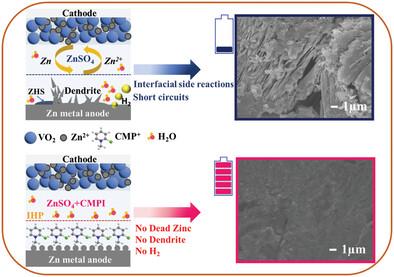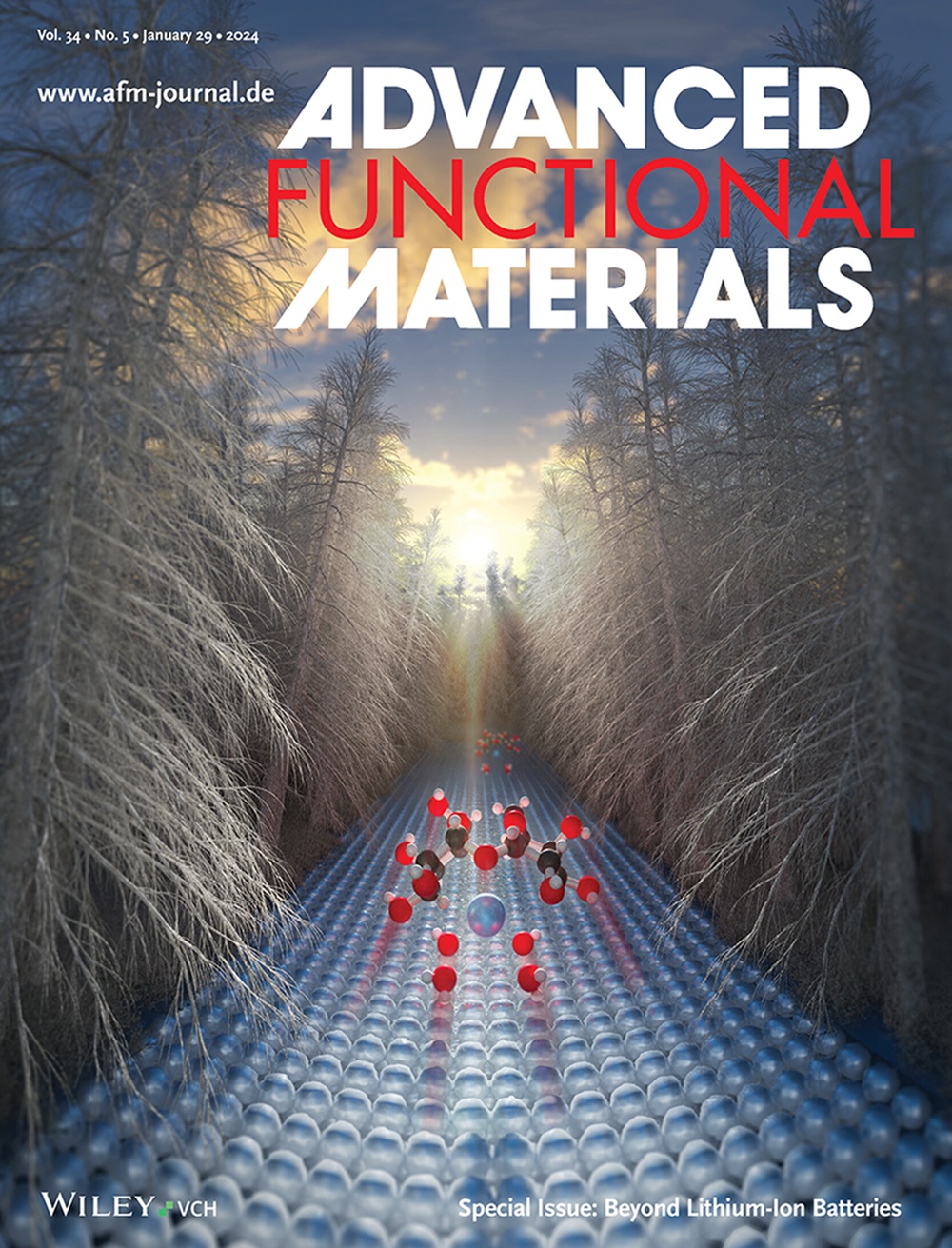Branch Chain Variations Modulate Pyridine Derivative Adsorption for Long-Life Zinc-Ion Battery
IF 18.5
1区 材料科学
Q1 CHEMISTRY, MULTIDISCIPLINARY
引用次数: 0
Abstract
Aqueous zinc-ion batteries (AZIBs), candidates for large-scale energy storage, face limitations due to the poor reversibility of zinc anodes. It reports on pyridine derivatives with high donor characteristics, including 2-chloro-1-methylpyridinium iodide (CMPI) and pyridine-2-acetaldoxime methyl iodide (PAMI), as effective additives. At lower concentrations, these additives markedly curtail the zinc dendrites formation and the evolution of hydrogen on the zinc anode, thereby prolonging the AZIBs life. Through a combination of theory and experiments, the impact of side-chain groups on the kinetic process of zinc depositioni is elucidated. In contrast to PAM+, CMPI+ demonstrates enhanced adsorption and self-assembles at the anode-electrolyte interface, forming a barrier to free water and a protective ZnI layer via I− ion integration. This dual-layer strategy boosts zinc plating/stripping reversibility by 100-fold and achieves a coulombic efficiency of 99.7% in zinc–copper half- batteries. The findings advance the understanding of electrolyte additive structures on zinc deposition, providing a molecular framework for screening additives in aqueous metal-ion batteries.

求助全文
约1分钟内获得全文
求助全文
来源期刊

Advanced Functional Materials
工程技术-材料科学:综合
CiteScore
29.50
自引率
4.20%
发文量
2086
审稿时长
2.1 months
期刊介绍:
Firmly established as a top-tier materials science journal, Advanced Functional Materials reports breakthrough research in all aspects of materials science, including nanotechnology, chemistry, physics, and biology every week.
Advanced Functional Materials is known for its rapid and fair peer review, quality content, and high impact, making it the first choice of the international materials science community.
 求助内容:
求助内容: 应助结果提醒方式:
应助结果提醒方式:


